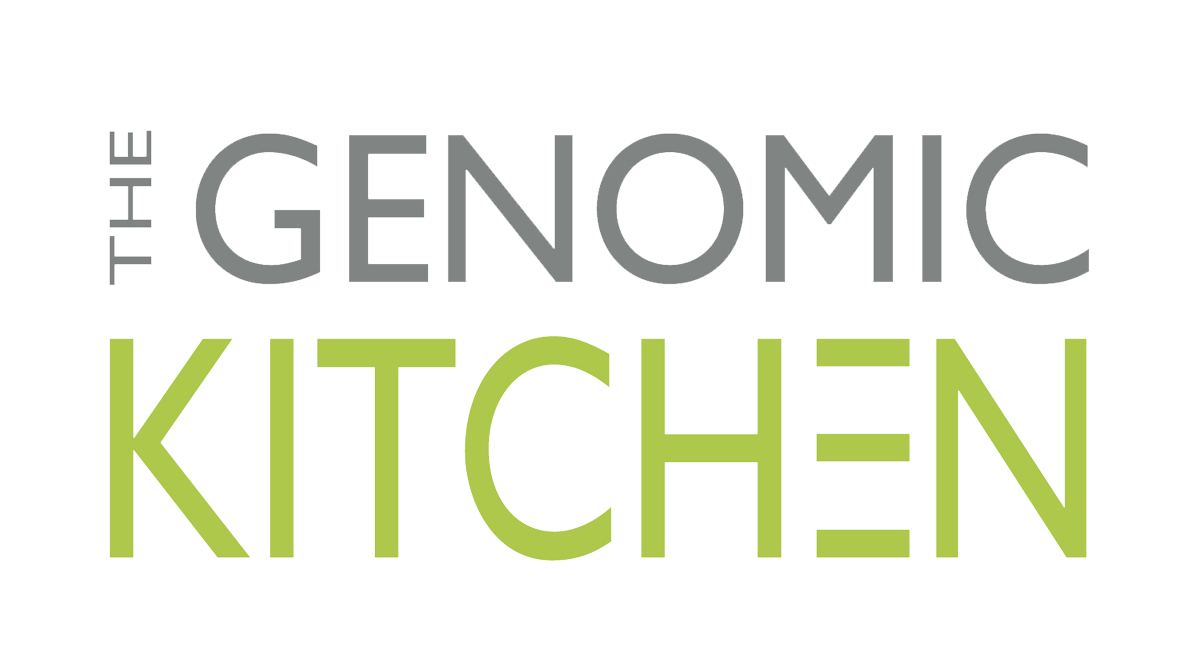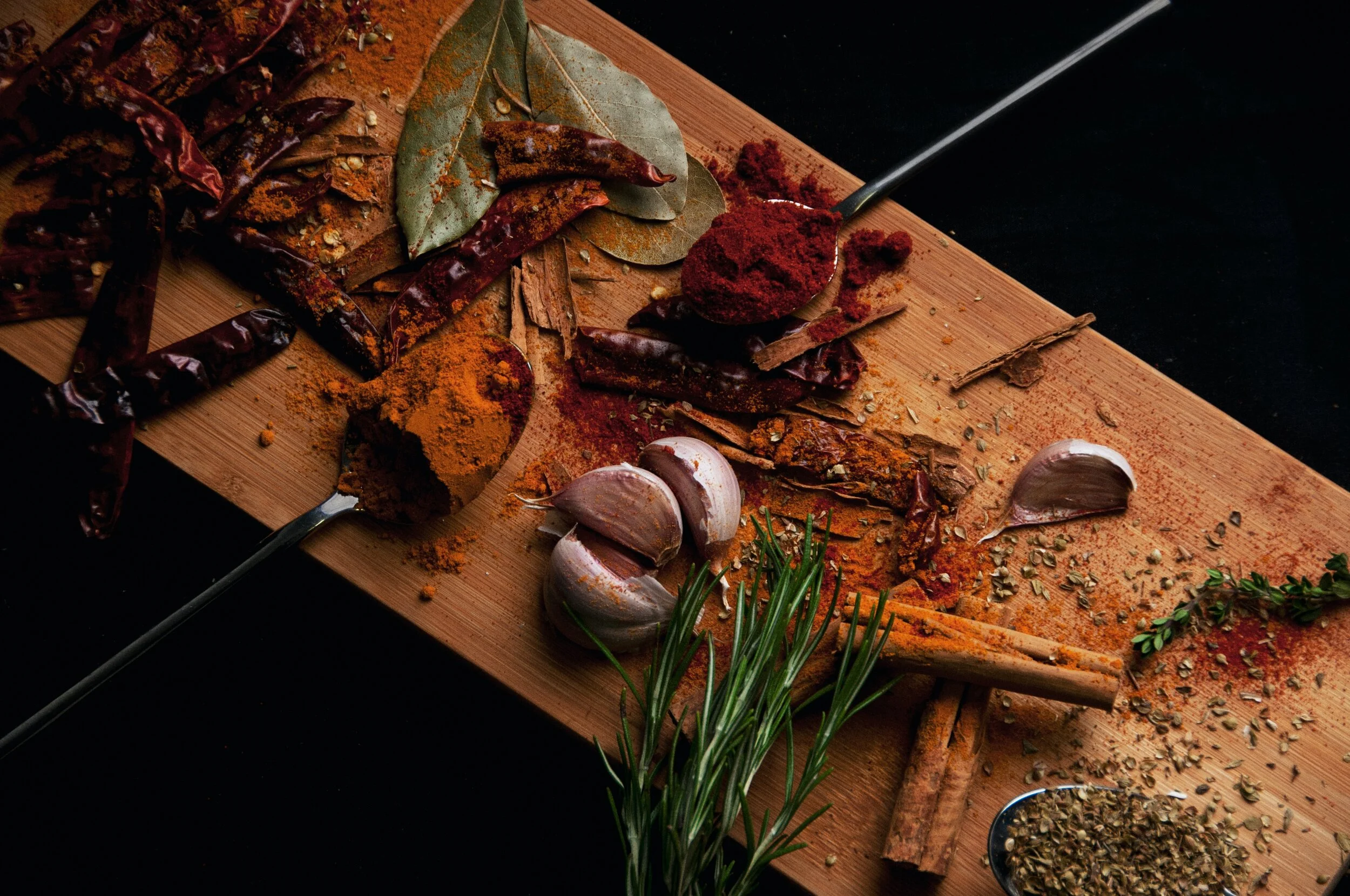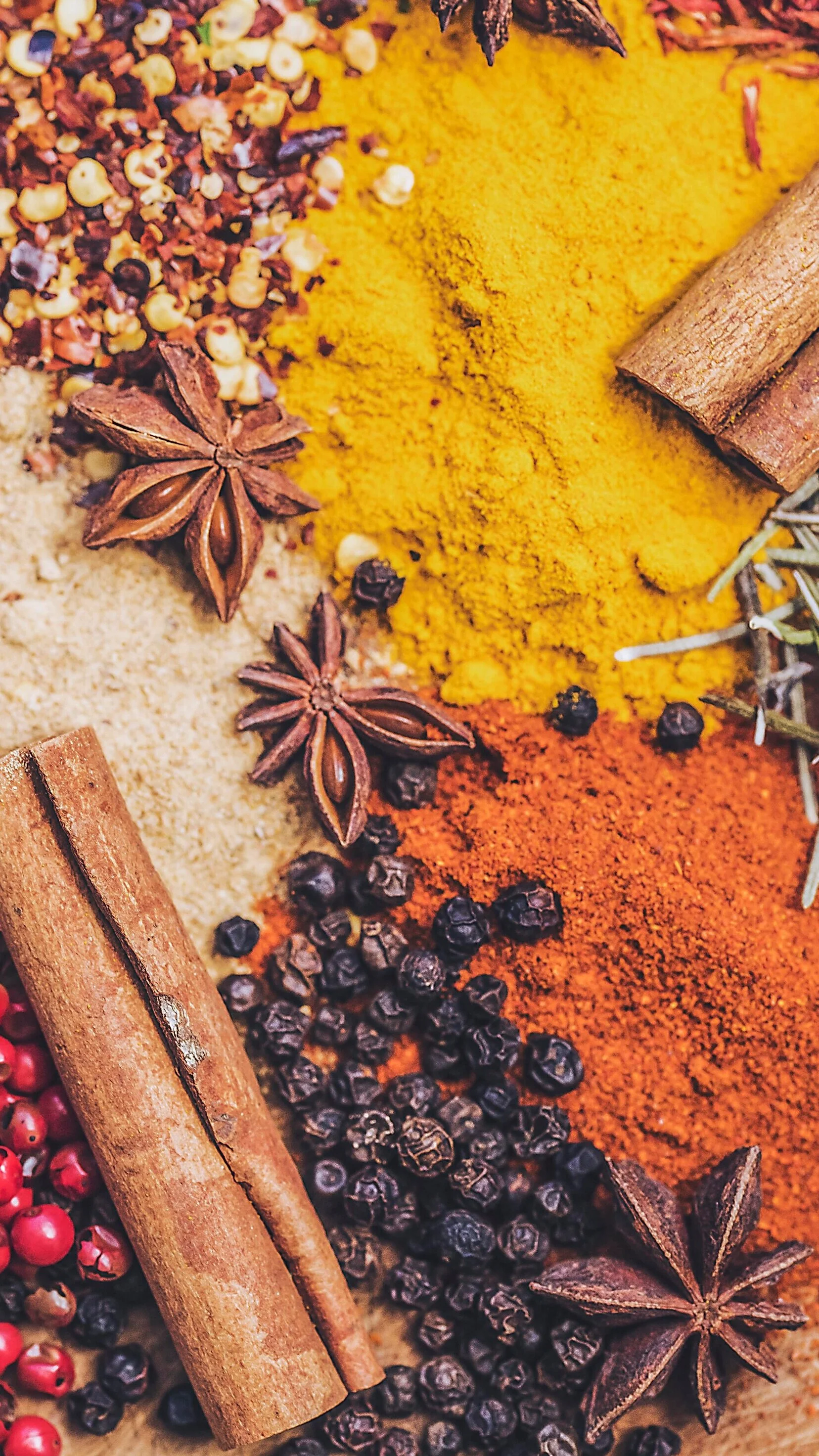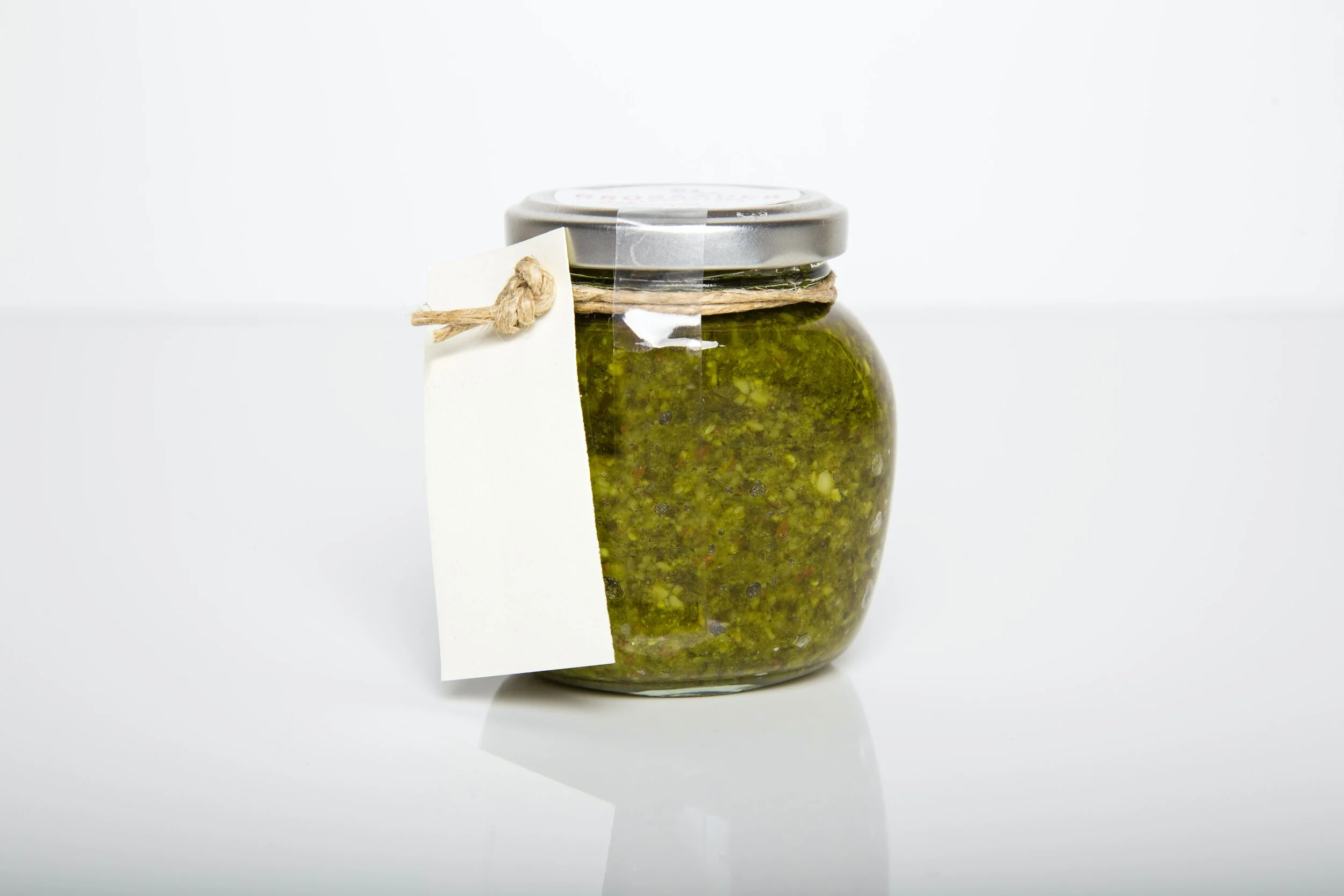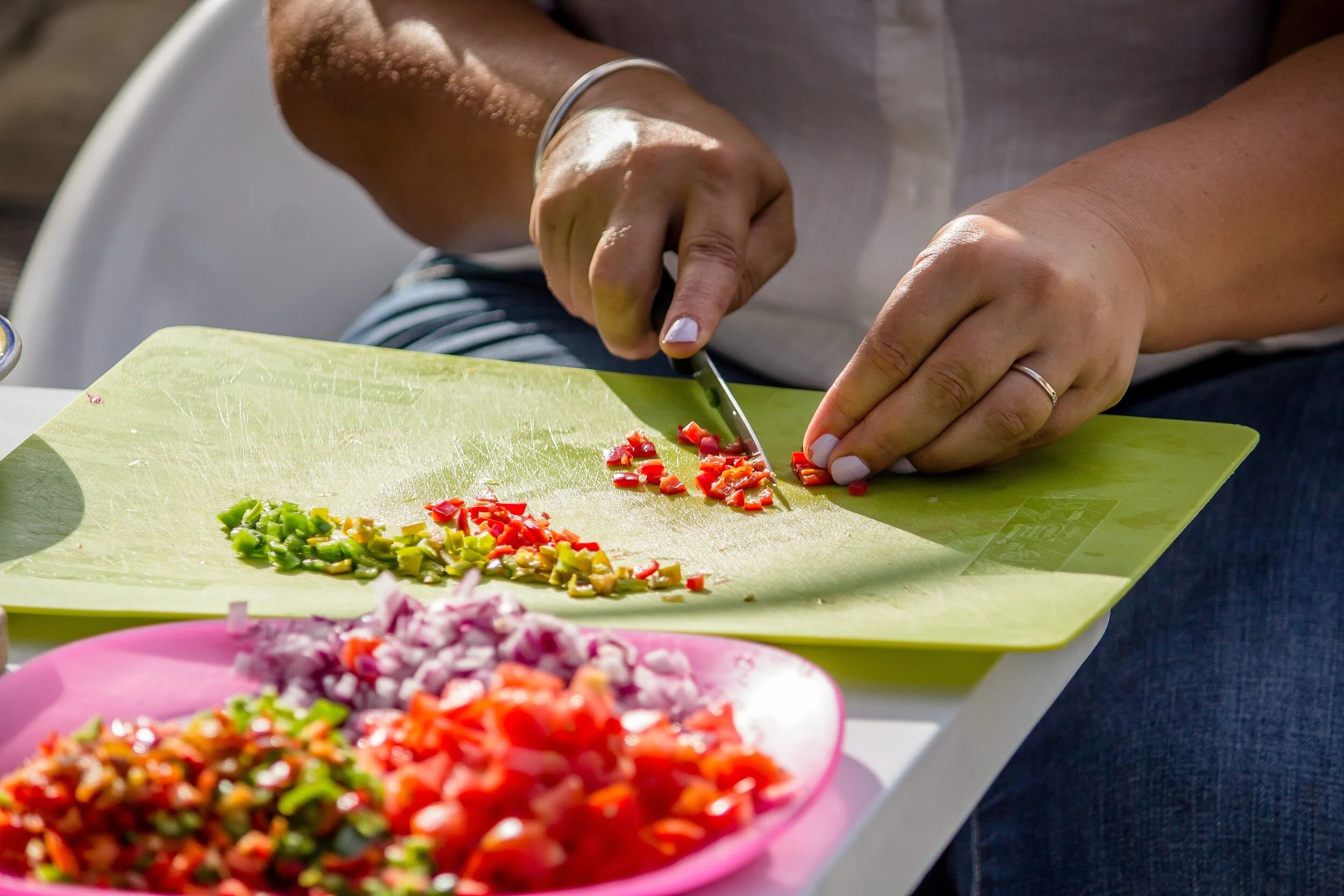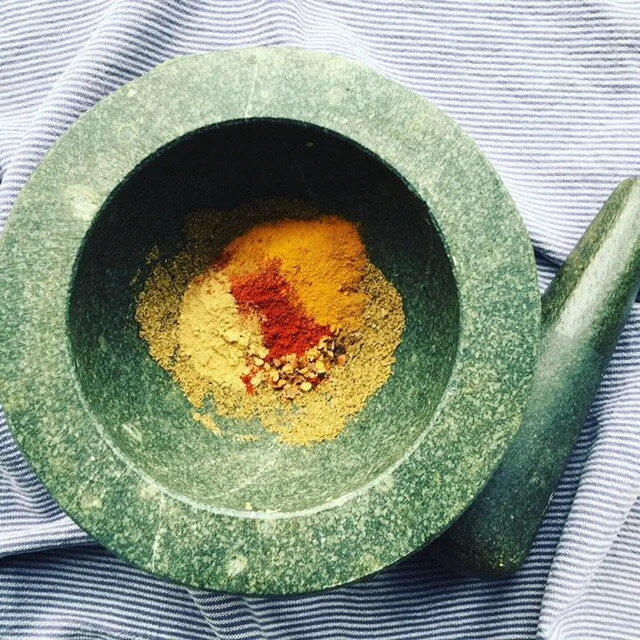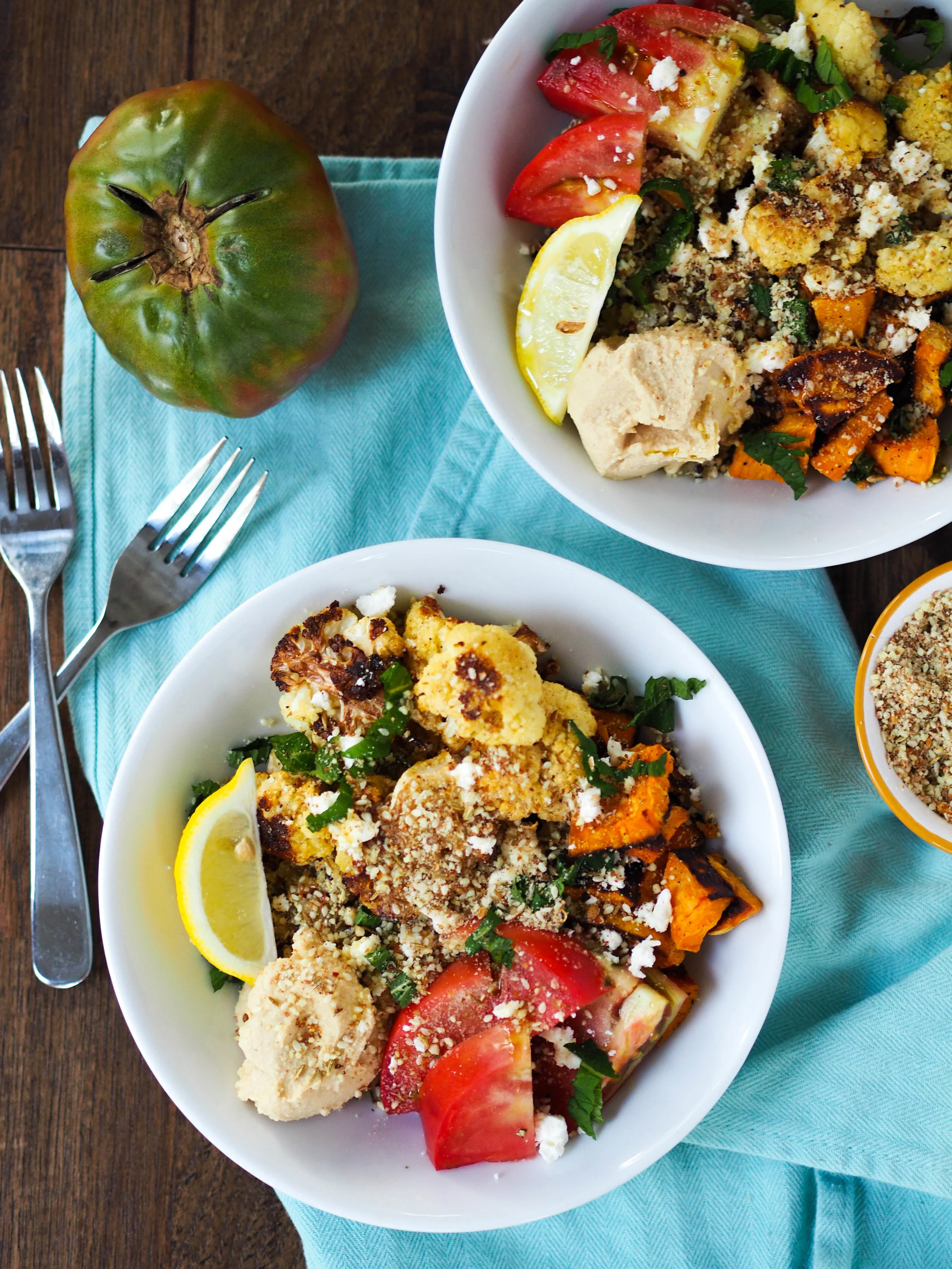Herbs and Spices: The Secret Weapon of Genomics
/One of the top powerful things emerging from the revolution of genomic medicine is the understanding of exactly how food provides information directly to the human body. Genomics moves us beyond the simplistic “good for you” idea that organizes food into calories, fat, carbs, protein, vitamins and minerals, into a new understanding of how non-nutritive molecules in food called bioactives, are instrumental to how the body functions.
It just so happens that the category of food that is perhaps the richest source of bioactives is herbs and spices. In this article, we’ll recap what bioactives do, and talk a whole lot more about why you should include as many herbs and spices as possible on your plate. In fact, don’t make or eat a meal without them!
What are Bioactives?
Bioactives, also called polyphenols, are the foundation of genomic medicine, so naturally, I have written a lot about these talkative molecules. Read more about them in-depth here. These non-nutritive molecules are instrumental to how genes inform powerful pathways in your body, akin to navigating highways and byways across America.
To put this in context, depending on your destination, you might start your journey on the interstate, exit to a state road, and then onto a county highway. In the human body, think of these as highways and pathways that nutrient information can drive down in order to reach a destination and elicit a certain reaction or perform a specific task.
Bioactives act like ignition switches in your car, kicking biochemical pathways into gear, and starting the journey to the final destination. They trigger pathways that turn on antioxidant firehoses, dousing your cells with nutrients. They reach into the immune system to turn on genes that act as breaks in the chaos or basically slap “a don’t even get started” sign on trouble-maker genes like Nf-kB. These examples are a bit simplistic, but I want you to understand that bioactives allow us to steer processes in the body that other nutrients, like vitamins and minerals, fats, and proteins simply can’t. And that is their incredible power.
These examples are a bit simplistic, but I want you to understand that bioactives allow us to steer processes in the body that other nutrients, like vitamins and minerals, fats, and proteins simply can’t. And that is their incredible power. Learn more about bioactives here.
Why Herbs and Spices?
Herbs and spices are the food group with the highest concentration of bioactives. These foods are a treasure trove, where each individual bioactive can perform the ignition function I mentioned. One of my favorite bioactive pathways, if you have read my work (or my book!), is the powerful NrF2 pathway, which is at the front lines of how your body produces its own antioxidants.
I also love to talk extensively about another molecule (we call it a transcription factor) called Nf-kB. When switched on, it unleashes a host of weapons in your immune system which is designed to tackle foreign invaders. Now Nf-kB is amazing at dealing with invaders day-to-day, but if it gets amped by stress or anxiety its products can rapidly overwhelm the immune system and subsequently your body. Adding powerful bioactives to your diet is the best way to apply the breaks to the Nf-kB molecule. The table below has a list of the best herbs and spices to slow the action of Nf-kB.
I like to ask people to think about food as an investment strategy.
Ask yourself where you will get the best Return on Ingestion (R.O.I.) for the money spent? For sure, you have to get enough calories to feed a hungry stomach. But food is more than calories, its information. And it turns out that some of the best information you can get to navigate the biochemical highways I talked about, is through the bioactives in herbs and spices.
In our discussion of bioactives, let’s take luteolin as an example. Look at the snapshot below from Phenol Explorer and you’ll see that herbs are by far the most robust source of this bioactive, compared to other foods (exception Globe Artichokes).
It’s the same with caffeic acid, the most robust source of this bioactive are herbs and spices. The richest source in herbs is sage, thyme, oregano, and rosemary. Among the spices: caraway, cumin, ginger, and cinnamon. The star of all of them is also a star: Star Anise. For apigenin: sage, oregano, and marjoram provide the richest sources of this bioactive. While herbs and spices are not always the most concentrated source of each bioactive (chestnuts, walnuts, black raspberries, and blackberries are the best source of ellagic acid for example), when it comes to buying food with a potent amount of bioactive information, herbs and spices are the crown jewel.
My Best Tips for Using Herbs and Spices
Now I have convinced you about the “why” behind herbs and spices, let’s talk about how to get the best out of them.
1. A Mixture Is Better Than A Single Herb or Spice
How do you evaluate the potency or the health-conducive properties of an herb or a spice? One way is to measure its antioxidant capacity (AC). The AC is a measure of the herb or spice’s ability to rein in those troublesome unstable oxygen molecules (free radicals) that damage cells and tissues. It’s why they are called ANTI-OXIDANTS.
Another measure of potency is to measure how well a given herb or spice prevents the oxidation of fats. Oxidized fats are another health no-no. It’s why we want you to buy and use fresh oils and not the ones that have been lurking in your pantry for a while. Here’s what we know:
Spices often have a much higher scavenging or protective ability than herbs.
When you heat spices, heat actually improves this scavenging ability. Yes really – blooming or toasting spices or including them as you cook enhances their antioxidant ability.
The more spices you include, the better the antioxidant response. At last, more is better!
Natural spices confer much better antioxidant capacity than synthetic ones. Period.
2. Fresh, Dried and Store-Bought Paste Forms of Herbs and Spices Are All Beneficial
The number one question I get from individuals and health providers is: which form of herbs and spices is best? Well, spices are usually dried with the exception of ginger and turmeric, so which form is best is usually a moot point, because we mostly buy in dried form.
Now when it comes to herbs, we’re looking at both flavor and health benefits. You will always get the best flavor from fresh herbs because they are at their most aromatic. You can’t really argue that.
But when it comes to health benefits, we once again look at antioxidant capacity.
In 2011, researchers compared the antioxidant capacity and phytochemical content of herbs and spices in dry, fresh, and a blended herb paste you could buy at the store or make at home.
They found that the antioxidant capacity in the paste was higher than both the dried and fresh herbs. Additionally, the dried herbs had a higher antioxidant capacity than the fresh form. Why? The devil is in the details. For the store-bought herb paste, manufacturers may have added additional antioxidants to stabilize volatile compounds in the herbs which would otherwise lead to changes in taste and color. So, the manufacturing process amped the antioxidant capacity!
Why would dried herbs have a higher antioxidant capacity than fresh? This is where it is tricky.
First of all, it depends on the herb – so not all dried herbs outperformed their fresh counterparts. Second, it depends on the drying process and the amount of antioxidant preservation that may have occurred. Third, where and when the fresh herbs were picked compared to the dried herbs also adds variability. So, in this experiment, although dried outperformed fresh, the researchers pointed out the possible reasons why this happened. The bottom line is you can safely use and benefit from all forms of herbs.
3. Adding Herbs to Your Salad Makes It Potent!
I love this study that was published way back in 2005 in the British Journal of Nutrition. The researchers compared the impact of increasing the number and variety of vegetables to a salad and the impact on nutrient density. It turned out that the type of vegetable added impacted the antioxidant capacity of the salad.
But, more importantly, when herbs were added, the antioxidant capacity of the salad increased exponentially. When they added lemon balm, there was a significant increase, but when marjoram was added instead of lemon balm, the increase was substantial. Herbs matter, regardless of the herb, but even among the herbs, there are differences. The point is, change up your salad, and for goodness sake add herbs every time you can!
4. The Sofrito is a Defining, Yet Timeless Moment In Cuisine
The sofrito is a blend of ingredients that serves as a base sauce in cooking. It varies by culture and region of the world and features different ingredients depending on the country. In Spain for example, it may feature garlic, onions, red peppers, and tomatoes sautéed in olive oil of course. An Italian version, called soffritto may feature onions, carrots, celery, and garlic sautéed in olive oil. A Latin American version may not be sautéed in olive oil, but instead processed in a food processor and added as a sauce of flavoring to a dish, which will ultimately feature a fat. This version may feature green peppers, onions, tomatoes, garlic, cilantro, and parsley and be called refogado, refrito, or other names specific to the culture. Ingredients can vary by country.
The point is that this sauce always features aromatic ingredients with herbs added to the base or to the finished dish. Oil is always featured somehow and somewhere. Why is this important? The base ingredients are rich in antioxidants and bioactives (polyphenols). The oil acts not only as a medium to extract these molecules that are usually lipophilic but also aids in their absorption too. And if you’re using olive oil, its own polyphenol content makes it one of the most information-rich sources of food in the world. Look for yourself in Phenol Explorer. You can discover more of the power of the sofrito in this study.
Powering Up Herbs and Spices in Delicious Ways
We love to use herbs and spices in creative ways to add flavor and potent “food information” to our meals. To change this up, we went beyond the usual pesto to find some beautiful spice and herb blends that will add delightful flavor and interest to any meal you make. And remember – synergy matters. The more herbs and spices you bring together, the higher the antioxidant benefit.
Middle East
Ras el Hanout
Now you know the power and potential of spices, there’s no better spice blend (in my opinion) that brings multiple spices together in a powerful symphony of flavor than Ras el Hanout. This beautiful blend of 12 spices and (optional) rose petals is a recipe from my culinary course partner, Chef Kate Waters. Kate is also a licensed nutrition expert in the UK, so she understands both flavor and health potential.
Click here to download her recipe
Zhug
This sauce is similar in ingredients and textures to Green Chimichurri (South America), Chermoula (North Africa), and Italian Pesto. Mike from Chili Peppers Madness makes a vibrant green Zhug with wonderful mixtures of aromatic seasonings. Also, if you’re a fan of hot sauces, Mike has abundant resources of sauces for you to try.
While we are in the Middle East with our taste buds, here is a spiced dish that you will love called hawaij spiced chicken, which pairs nicely with zhug. Dale from The Daley Plate brings on a bold flavor and what’s even better is that this is all made in a pressure cooker!
Za’atar
The perfect combo of tahini and za’atar. Erica Julson puts a unique spin on Ottolenghi’s Plenty roasted eggplant.
Rachael Hartley’s recipe for za’atar roasted cauliflower goes with a lot of different dishes to give a Middle Eastern flare. Turn anyone into a veggie-lover by upgrading your roasted cauliflower recipe to this flavorful dish packed with sweet and salty.
Mediterranean
Dukkah
A simple salad by Domestic Dietitian packed with fresh herbs, garlic and dukkah. A side dish you can put together in under 30 minutes!
East Asian
Furikake
Now for a twist on a furikake seasoning by Ashley at The Better Nutrition Program. Add some shiitake mushrooms, garlic, shallot, ginger, and sweet and spicy seasonings and you have an easy flavorful backdrop for a stir-fry, roasted potatoes, or slaw.
References
Opara EI, Chohan M. Culinary Herbs and Spices: Their Bioactive Properties, The Contribution Of Polyphenols And The Challenges In Deducing Their True Health Benefits. Int J Mol Sci. 2014;15(10):19183–19202.
Effect of Thermal Treatment on Radical-scavenging Activity of Some Spices. Food Science and Technology Research. 2006. 12(3):178-185.
Shobana, S., & Akhilender Naidu, K. (2000). Antioxidant Activity Of Selected Indian Spices. Prostaglandins, Leukotrienes And Essential Fatty Acids (PLEFA), 62(2), 107–110.
Ninfali P, Mea G, Giorgini S, et al. Antioxidant Capacity Of Vegetables, Spices And Dressings Relevant To Nutrition. Br J Nutr. 2005 Feb;93(2):257-66.
Rinaldi de Alvarenga JF, et al. Using Extra Virgin Olive Oil to Cook Vegetables Enhances Polyphenol and Carotenoid Extractability: A Study Applying the sofrito Technique. Molecules. 2019;24(8):1555.
